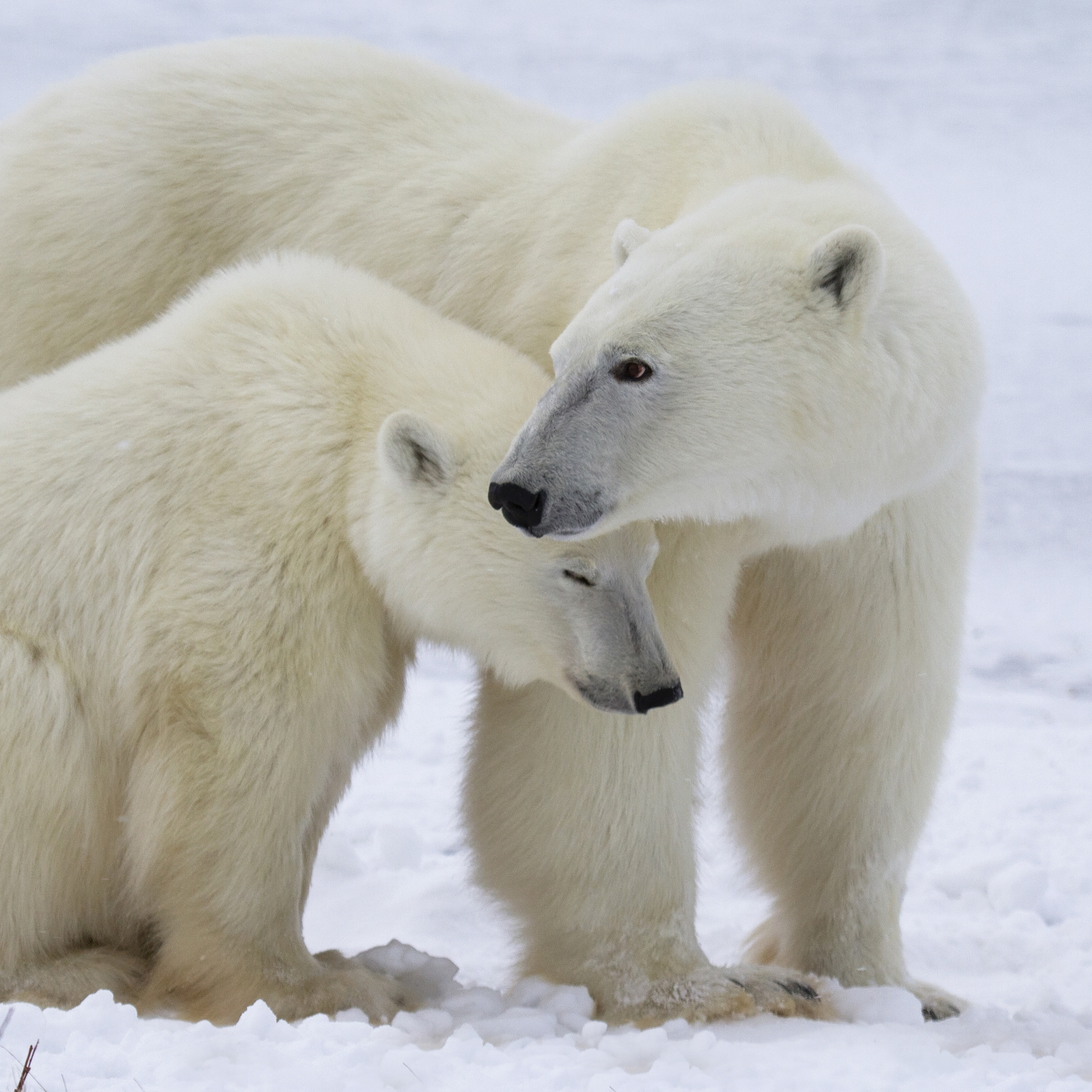
The distinctive profiles of polar bears are easily recognized by children and adults all over the world, and yet they live farther from population centers than almost any other creature. They inhabit the inhospitable Arctic regions of a small number of countries.
And polar bears are major attractions in zoos around the world — they are big, noble, and undeniably cute. They are among the largest carnivores on Earth and can weigh more than 10 adult humans. Yet their cubs are tiny, weighing much less than human babies.
Polar bears are extraordinarily well adapted to their harsh environments. They have two layers of fur to keep them warm and a layer of blubber that provides insulation, stores nutrition, and helps them float. While their fur looks white, it is actually transparent, which helps the bears blend in with their snowy surroundings. In what might come as a surprise to casual observers, polar bears also have black skin underneath their fur that helps soak up the sun’s warmth. As a result, they can survive in temperatures that would quickly kill other animals. Their sense of smell, among the best in the animal kingdom, helps them find the seals that are a mainstay of their diet. Plus, they are excellent swimmers.
Yet, polar bears are vulnerable to climate change, as rising temperatures cause sea ice to form later each year and melt earlier, resulting in a loss of habitat and less time for hunting for food. In addition, a recent proposal from the Trump administration could open the Arctic Ocean to oil and gas drilling, further jeopardizing the area’s wildlife and their habitat.
To bring attention to the issues these magnificent beasts face, conservationists in recent years have celebrated Feb. 27 as International Polar Bear Day. To mark the occasion, and to do our bit to raise awareness, 24/7 Wall St. has compiled 25 facts about polar bears that just might surprise you.
Click here to see 25 surprising facts about polar bears.
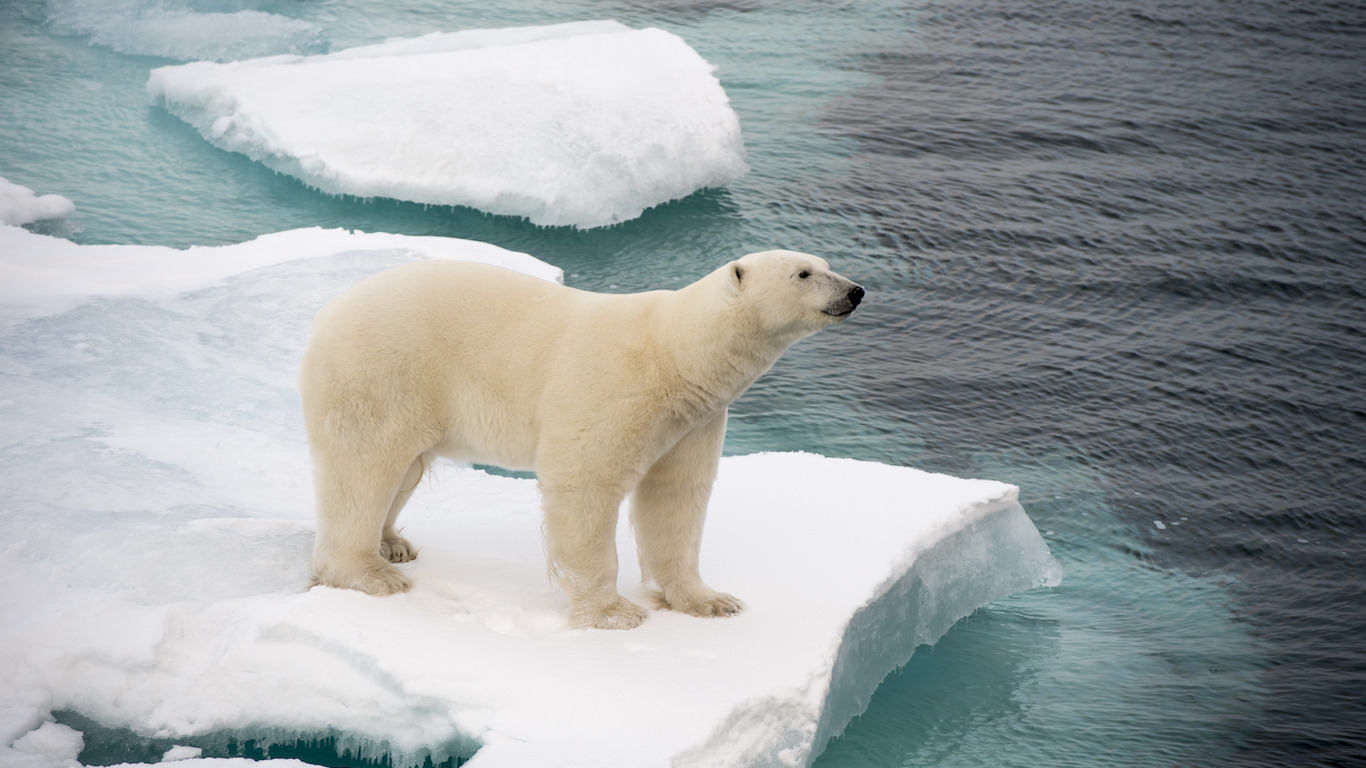
1. Polar bears reside in Canada, Greenland, Iceland, Norway, Russia, and the United States (Alaska).
Their favorite habitat is the pack ice of the Arctic Ocean, but polar bears will travel vast distances as the ice melts and freezes in search of good hunting grounds.
[in-text-ad]
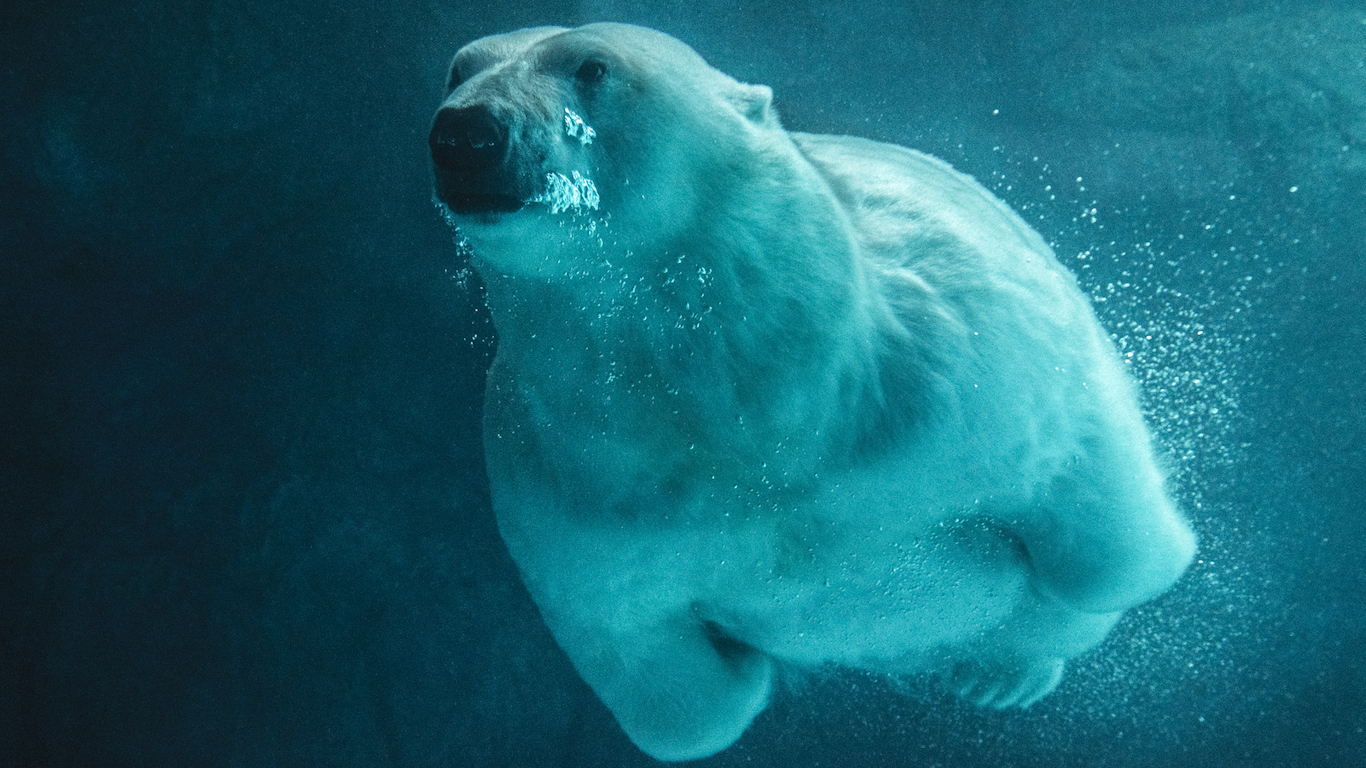
2. The Latin name for polar bear is Ursus maritime, which means maritime bear.
Scientists classify polar bears as marine mammals because they spend most of their lives on sea ice. There are 19 distinct subpopulations of the Arctic bear.
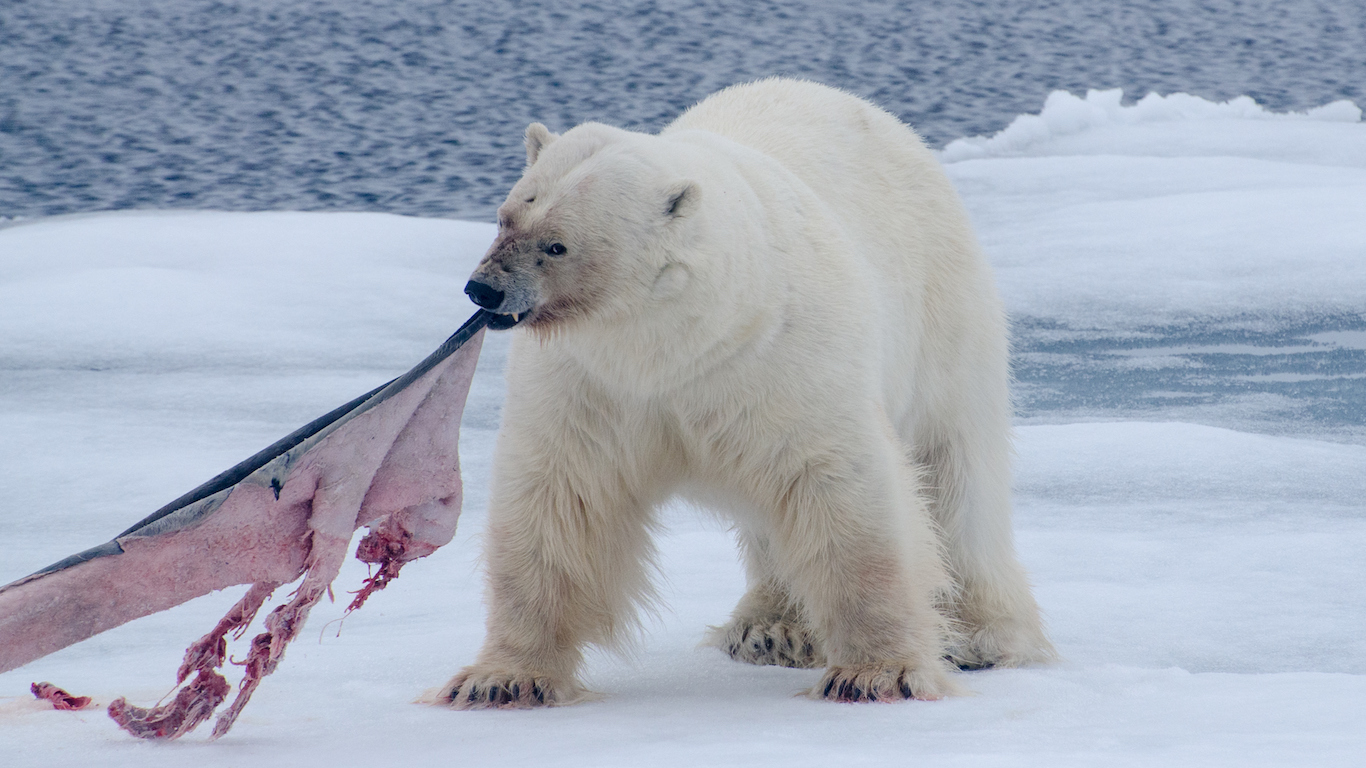
3. Polar bears are among the largest carnivores on Earth.
Adult males can be as long as 8 feet and weigh as much as 1,760 pounds. They are rivaled in size only by the Kodiak brown bears of Alaska.
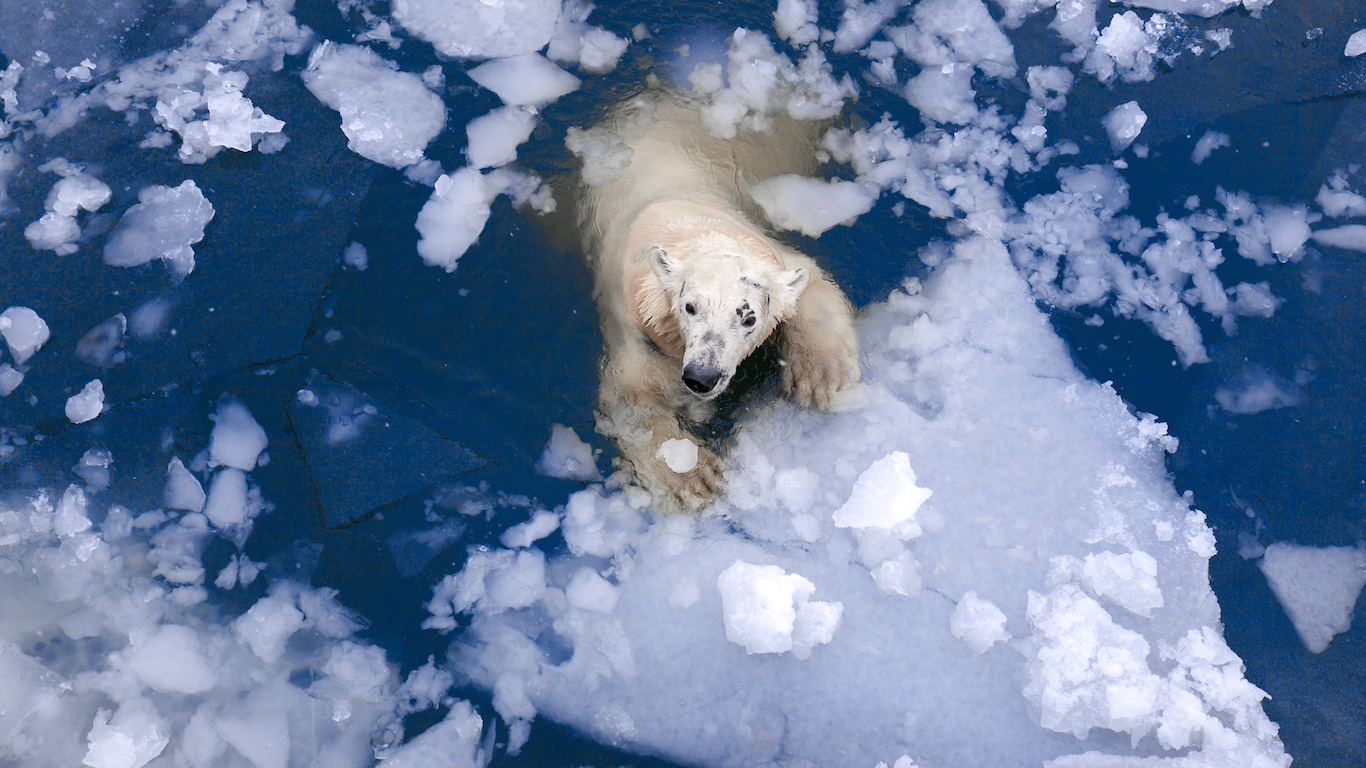
4. The blubber layer of polar bears insulates them from freezing temperatures in the air or water and aids them when they’re floating.
As a result, polar bears can survive in temperatures as low as -40 degrees Fahrenheit. Their blubber also carries as a reserve supply of nutrients, allowing them to go for long periods without eating.
[in-text-ad-2]
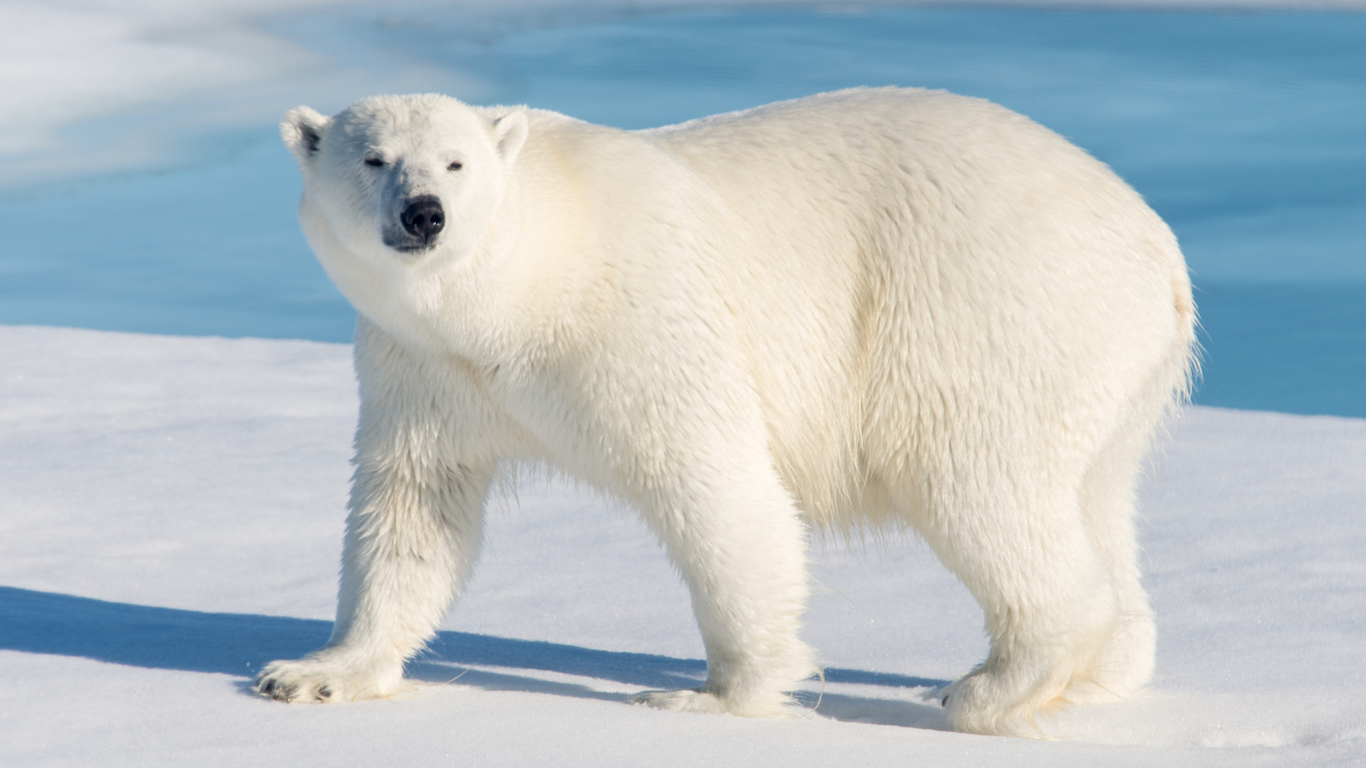
5. Polar bears are famous for their white color, but their fur is actually transparent.
Their fur comes in two layers: The outer layer is lined with guard hair, which can be 6 inches long, and below this lies shorter but denser underfur. Underneath all the fur, the skin of polar bears is black, enabling them to absorb the heat of the Sun.

6. Polar bears are so well adapted to the cold, they can become overheated.
This is why they often walk at a relaxed pace, to avoid growing too hot. They also take dips in the cold Arctic waters to cool off after extensive exertion.
[in-text-ad]
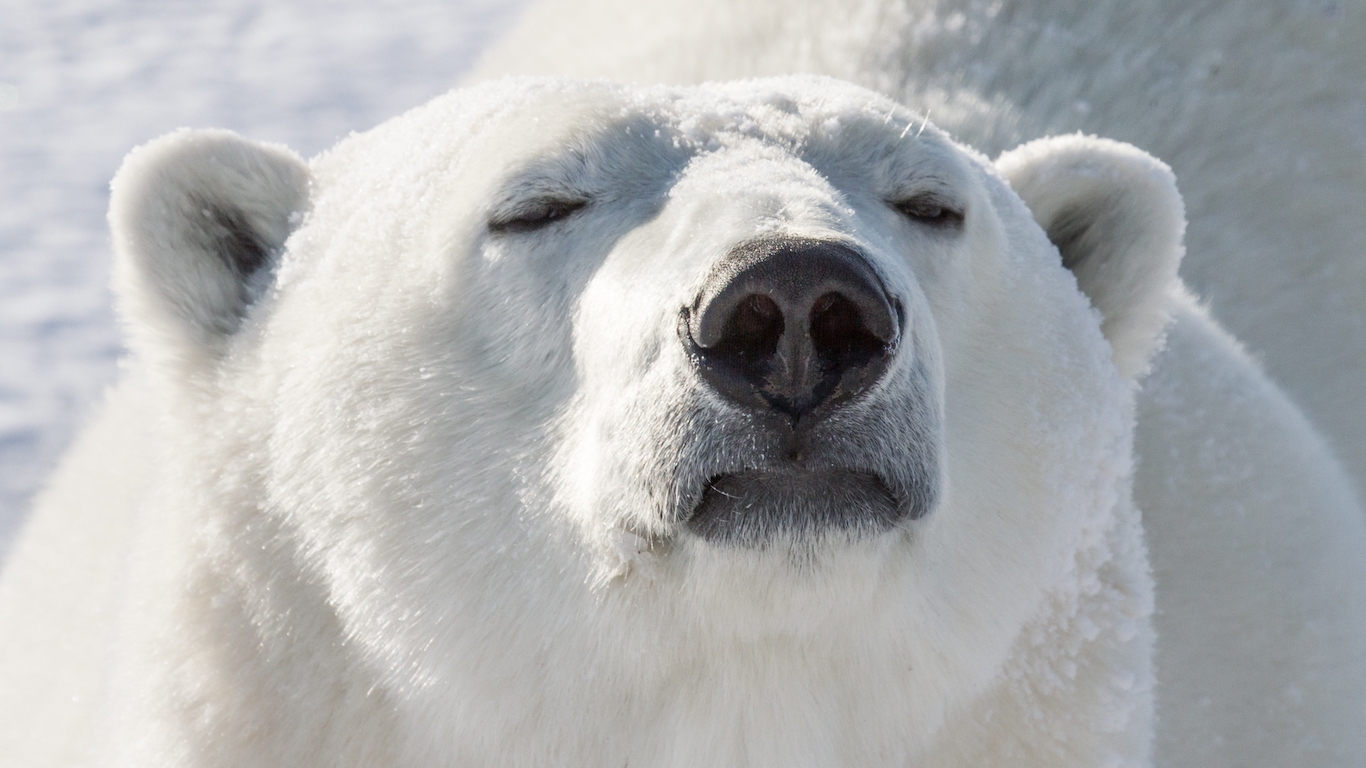
7. These bears have an incredible sense of smell—among the sharpset of any species.
Scientists believe some polar bears can smell a seal under 3 feet of ice or from almost a mile away. During the mating season, male bears rely on their sense of smell to locate females.

8. The hearing and vision of polar bears, however, are not great.
Compared with their large noses, the ears and eyes of these bears are quite small — and not nearly as effective. They are fairly quiet creatures, making a “‘chuffing”’ sound to greet one another or growling occasionally to show aggression.

9. Seals are polar bears’ favorite prey. They will go after ringed seals, bearded seals, harp seals, and hooded seals.
They will also eat walruses, whales, seabirds and their eggs, and even vegetation.
[in-text-ad-2]
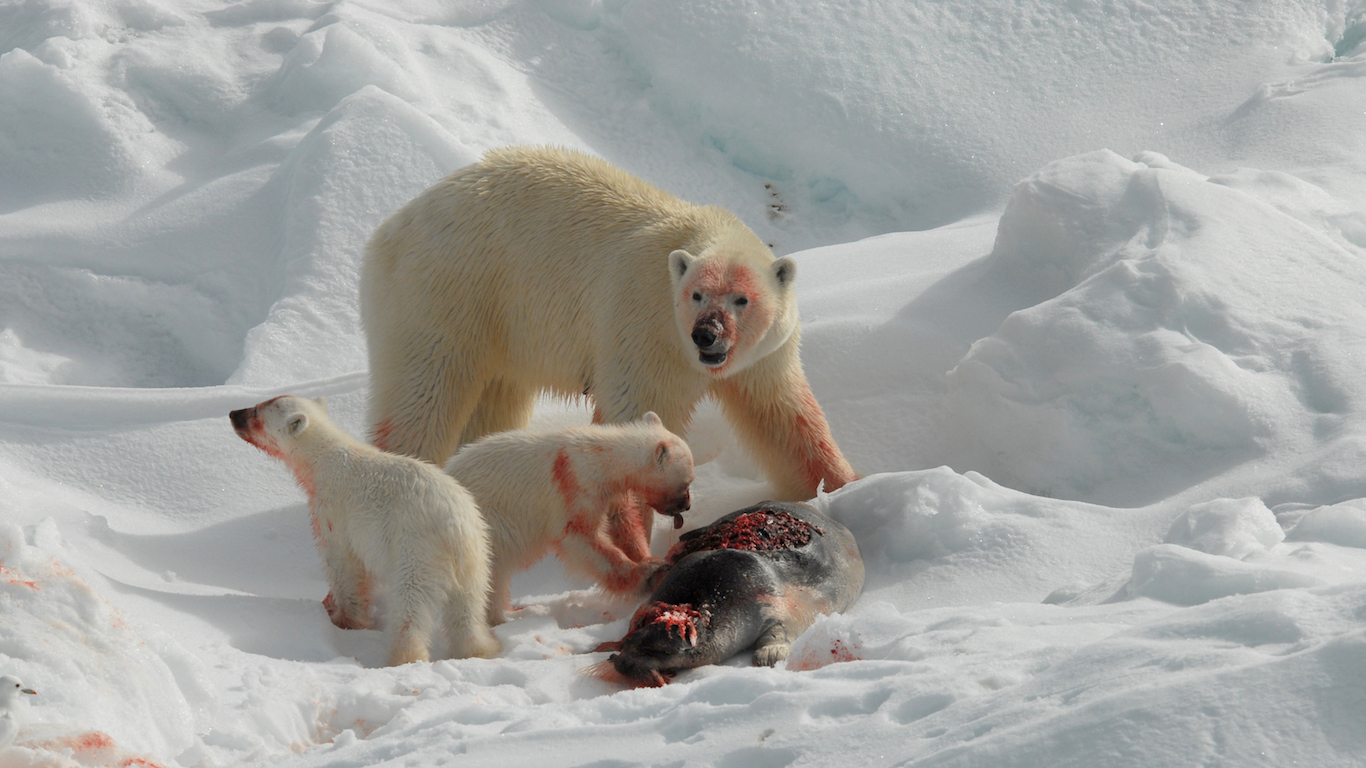
10. Feasting on an adult seal can provide a polar bear with eight days’ worth of energy.
That might sound like a huge meal, but a polar bear can go for months without food during the lean times and relies on its fat reserves in order to survive.
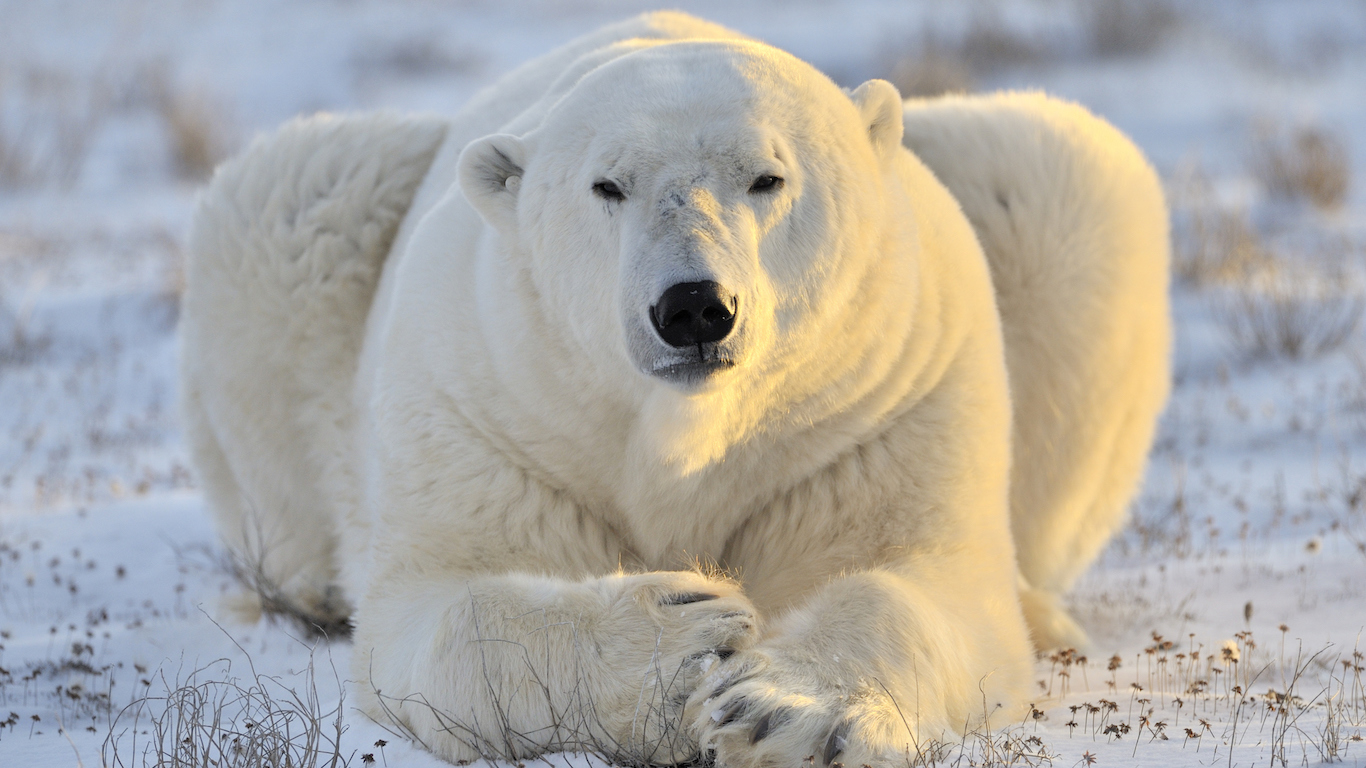
11. Polar bears are exceptionally patient hunters.
Seals cut breathing holes for themselves in the Arctic ice as they swim underneath. Polar bears will wait — sometimes for hours, or even days — for the seals to surface for air at these holes. This method is called “still hunting.”
[in-text-ad]
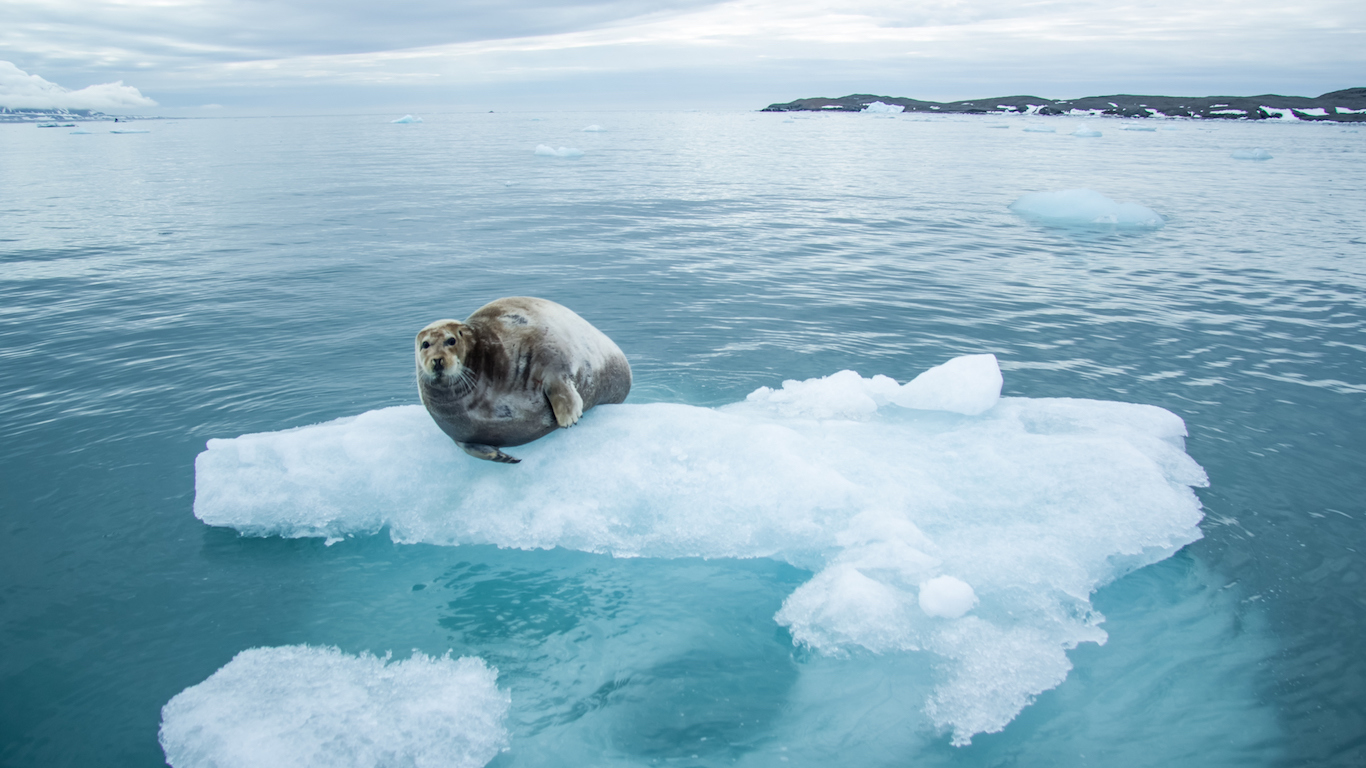
12. A polar bear can eat 100 pounds of seal blubber in one meal.
Seal meat, the polar bear snack of choice, has a very high fat content. If many seals are readily available for hunting, an adult polar bear might then eat only a seal’s skin and blubber, leaving the rest of the carcass for younger bears or smaller Arctic creatures.
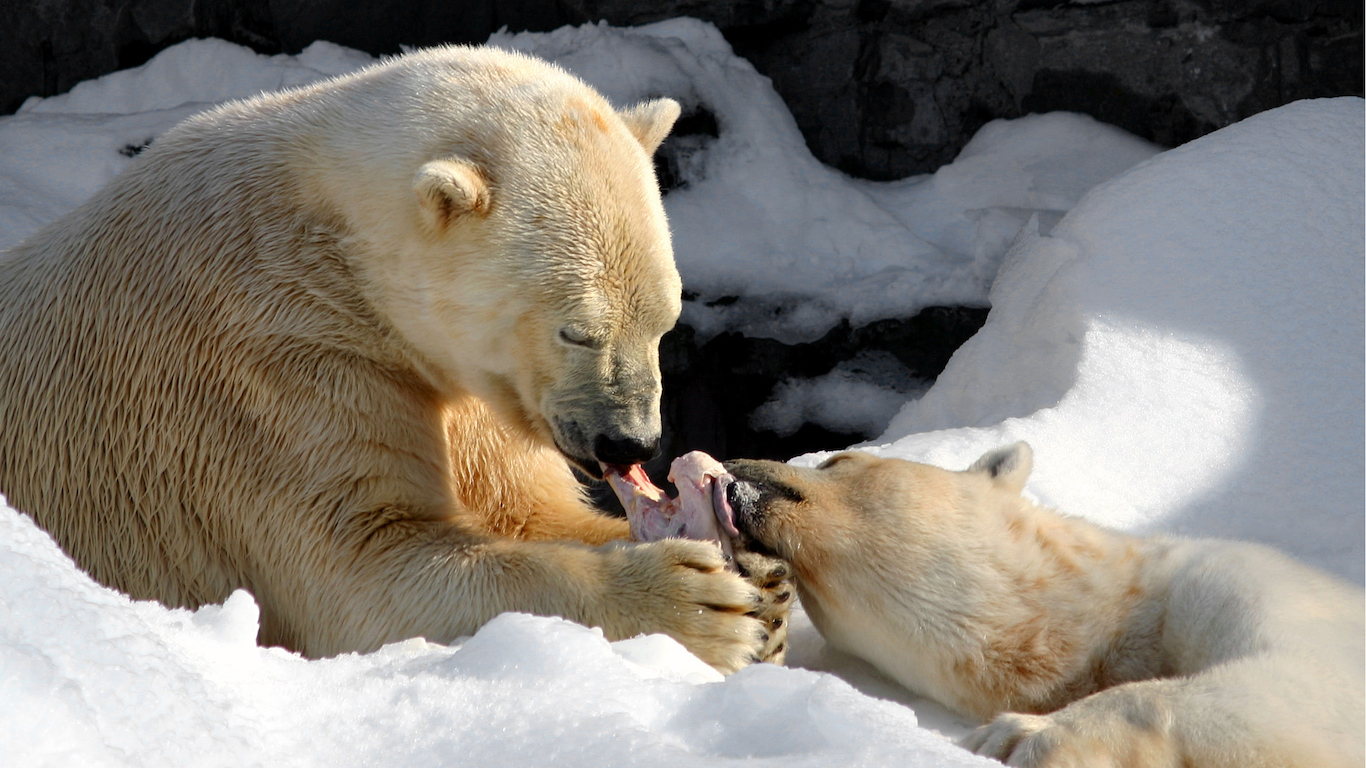
13. Polar bears are good sharers.
Although polar bears can be rather solitary at times, several of them might peacefully share a large carcass together.
But there is a protocol they follow: A bear that is trying to join the meal approaches while remaining low to the ground and touches the nose of the dominant bear.
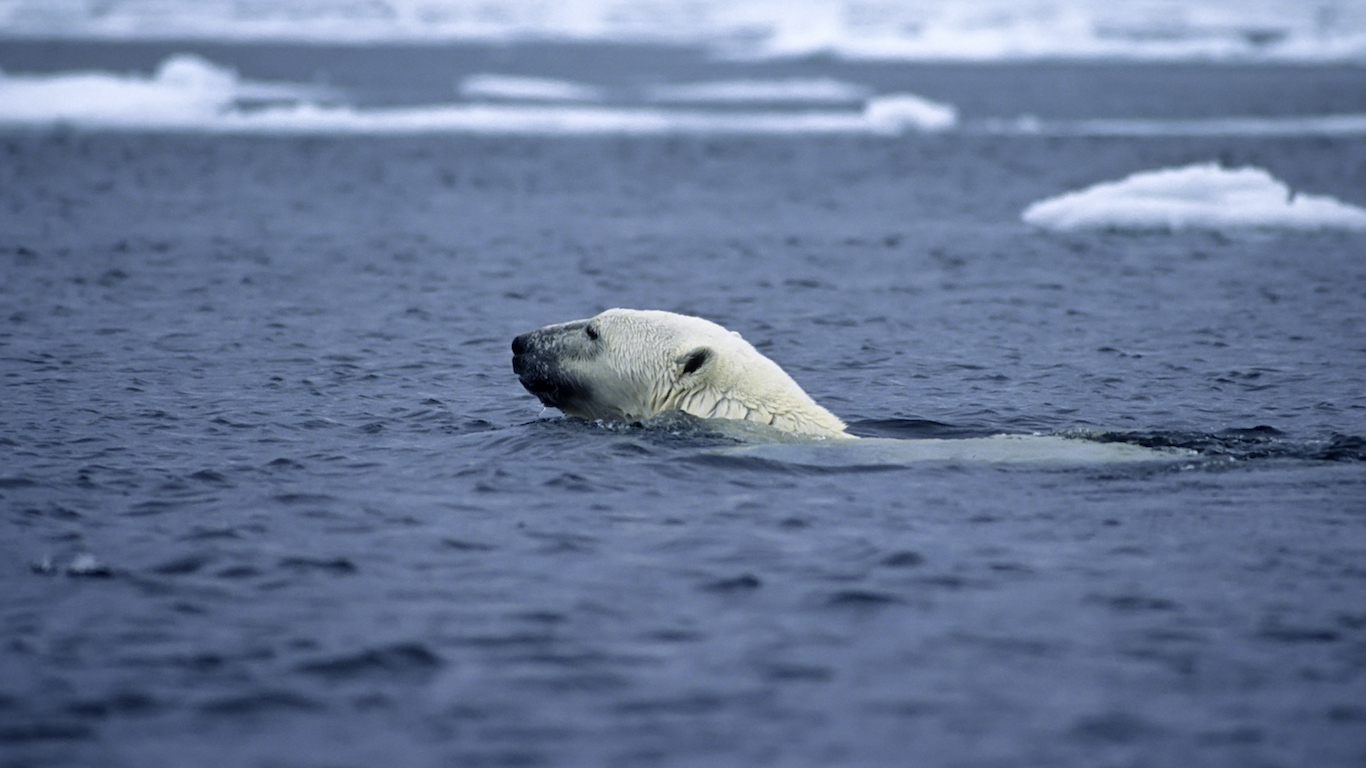
14. Polar bears are excellent swimmers.
Their slightly webbed paws work as paddles, and their hind legs act as rudders. They can swim as fast asf 6 miles an hour. If that doesn’t sound fast, Michael Phelps’s speed is less than 4 miles per hour!
[in-text-ad-2]

15. Female polar bears often give birth to twins.
The females dig maternity dens for their cubs deep in snowdrifts, which insulates them from the fierce Arctic cold. The cubs remain in these snow dens with their mothers for a few months before venturing out.
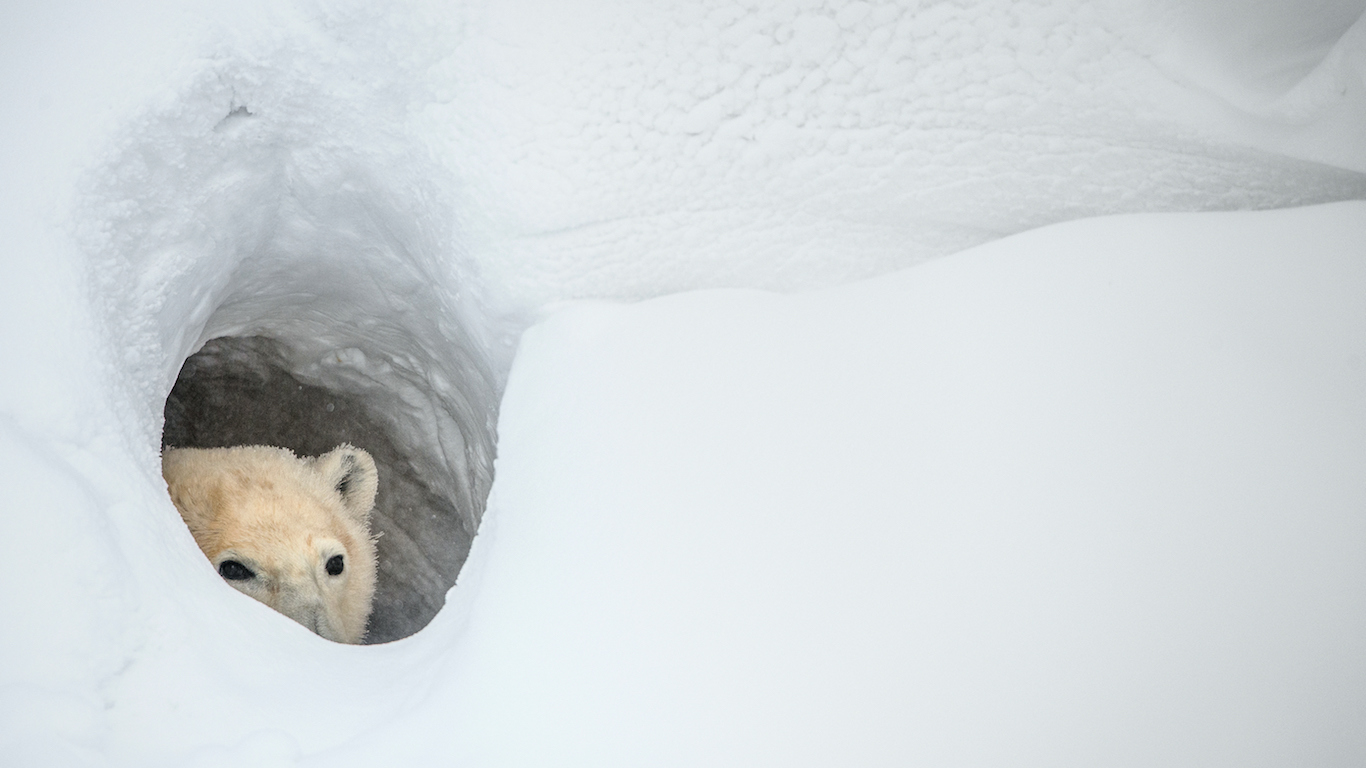
16. A mother bear won’t eat the entire time that she is in the den.
Her stay could be four to eight months. All her energy during this time goes to providing for her young.
[in-text-ad]
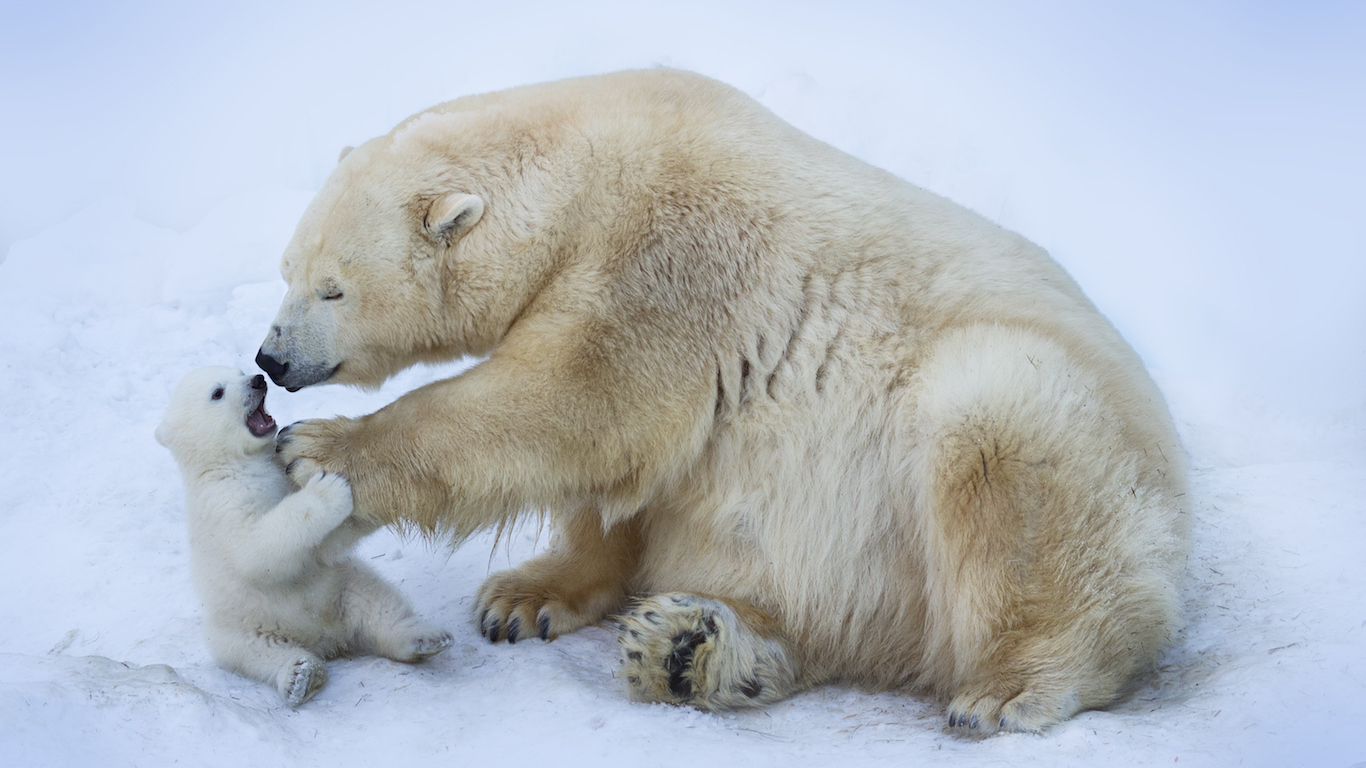
17. At birth, polar bear cubs weigh only about a pound.
But they grow quickly — polar bear milk is 35% fat, making it the richest milk of any bear species. Cubs stay with their mother for more than two years, while they learn hunting and other skills.

18. Male polar bears aren’t great at child raising.
They don’t provide any parental care for their young; they have even been known to kill cubs.
And while polar bears are generally quiet, a male will growl to other males during the breeding season as a sign of aggression.
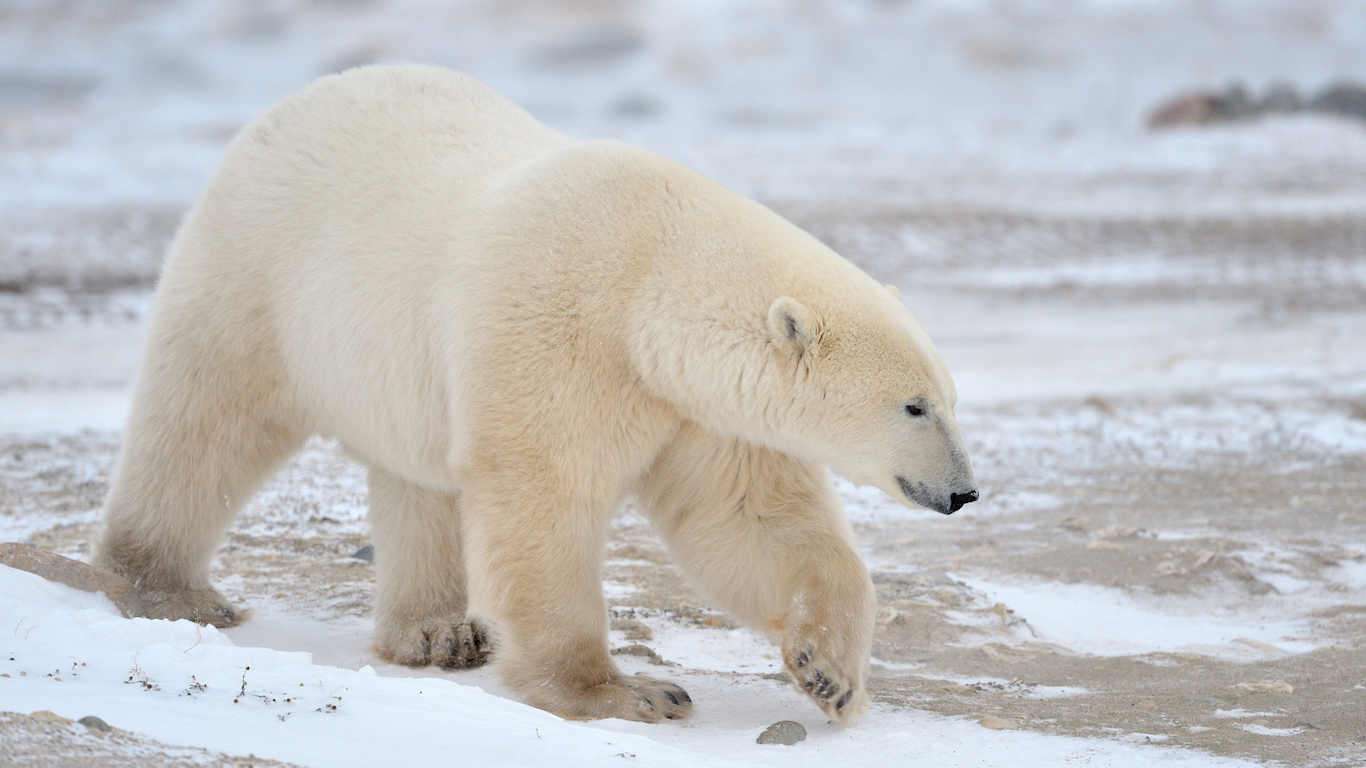
19. The life expectancy of polar bears in the wild is 25 to 30 years.
The lifespan of polar bears in captivity is on average 38 years, although a female polar bear lived to be almost 44 at the Detroit Zoo.
[in-text-ad-2]
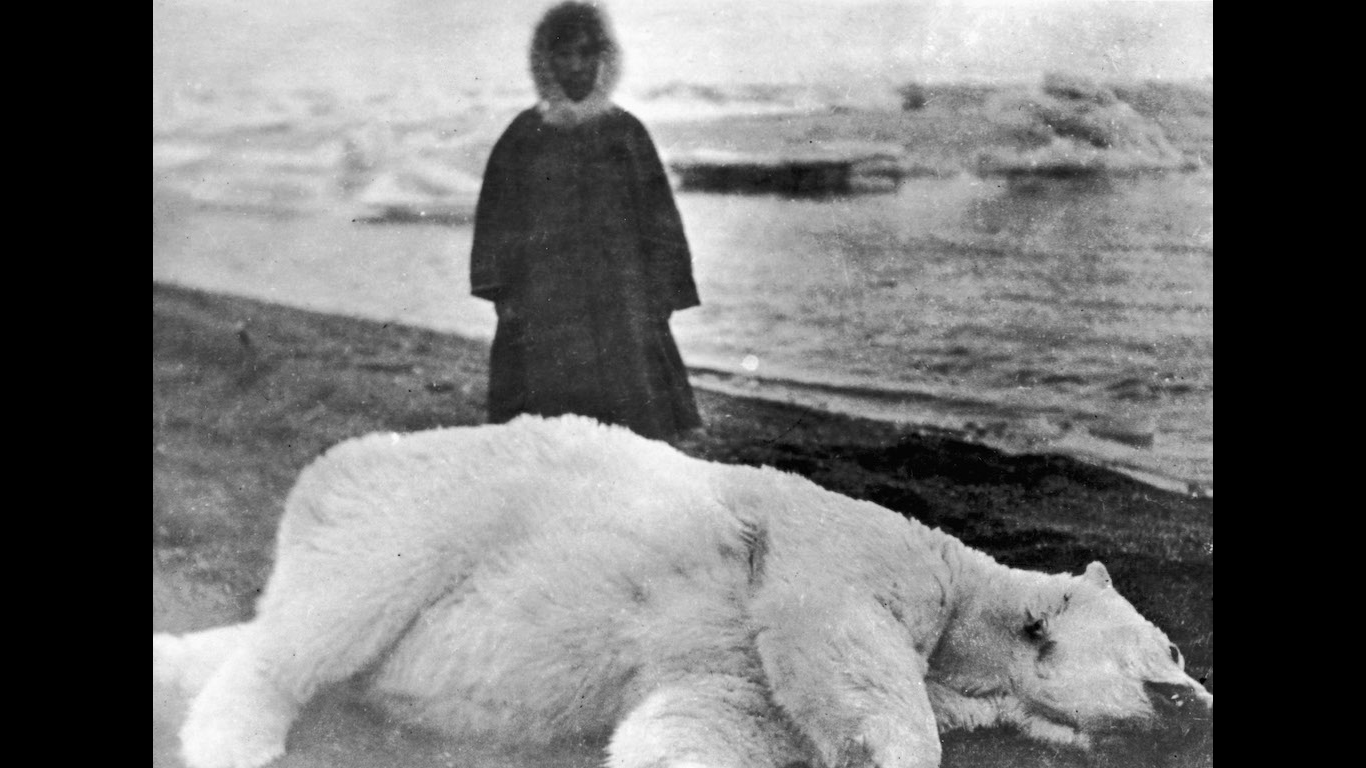
20. Humans and other polar bears are the only predators of this species.
Indigenous people in the Arctic hunt polar bears for their meat and fur, but government agencies now carefully monitor the hunts. Male polar bears have been known to attack and kill bear cubs. Females will attack larger males to protect their young but generally try to avoid such encounters when they have their cubs in tow.
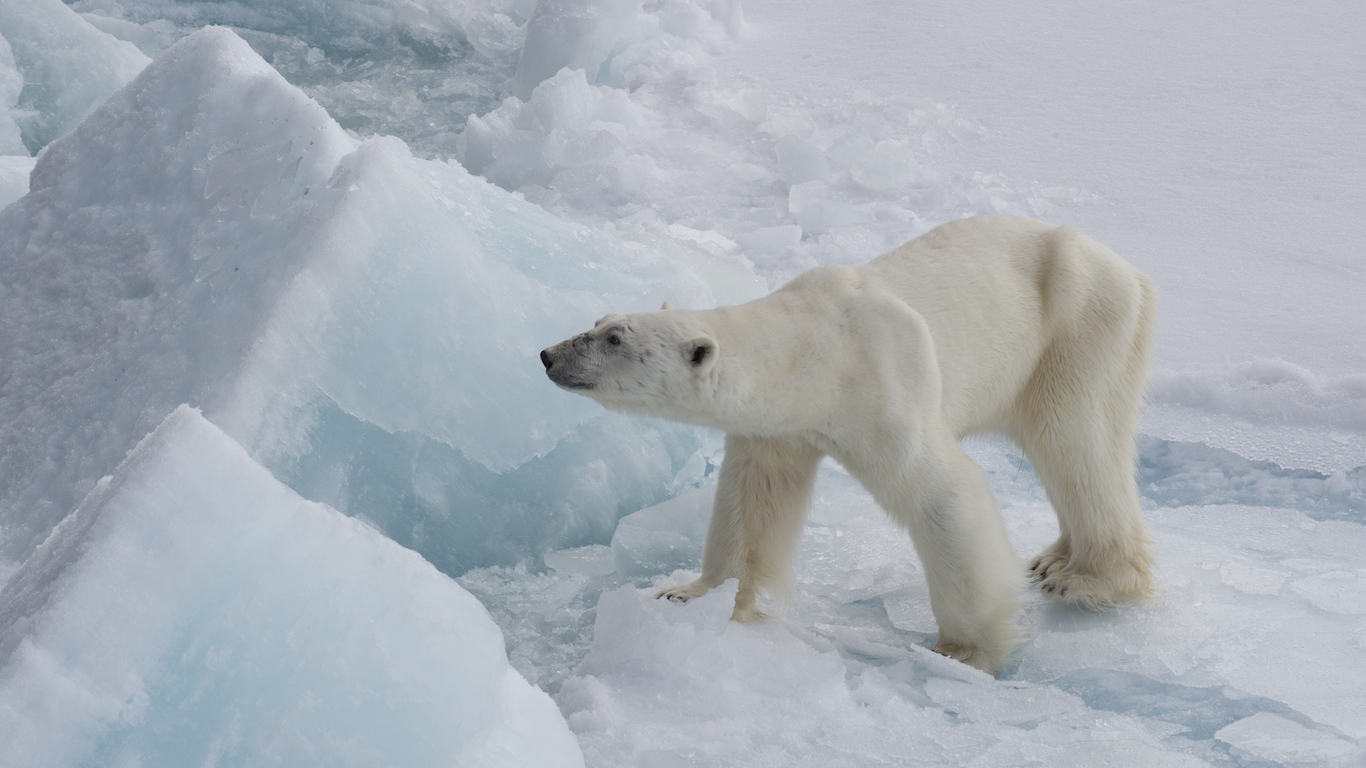
21. Polar bear liver is toxic to humans.
While indigenous people eat the meat of polar bears, they do not consume the liver. The liver contains such high levels of vitamin A that it is toxic to humans. It also makes sled dogs very sick.
[in-text-ad]
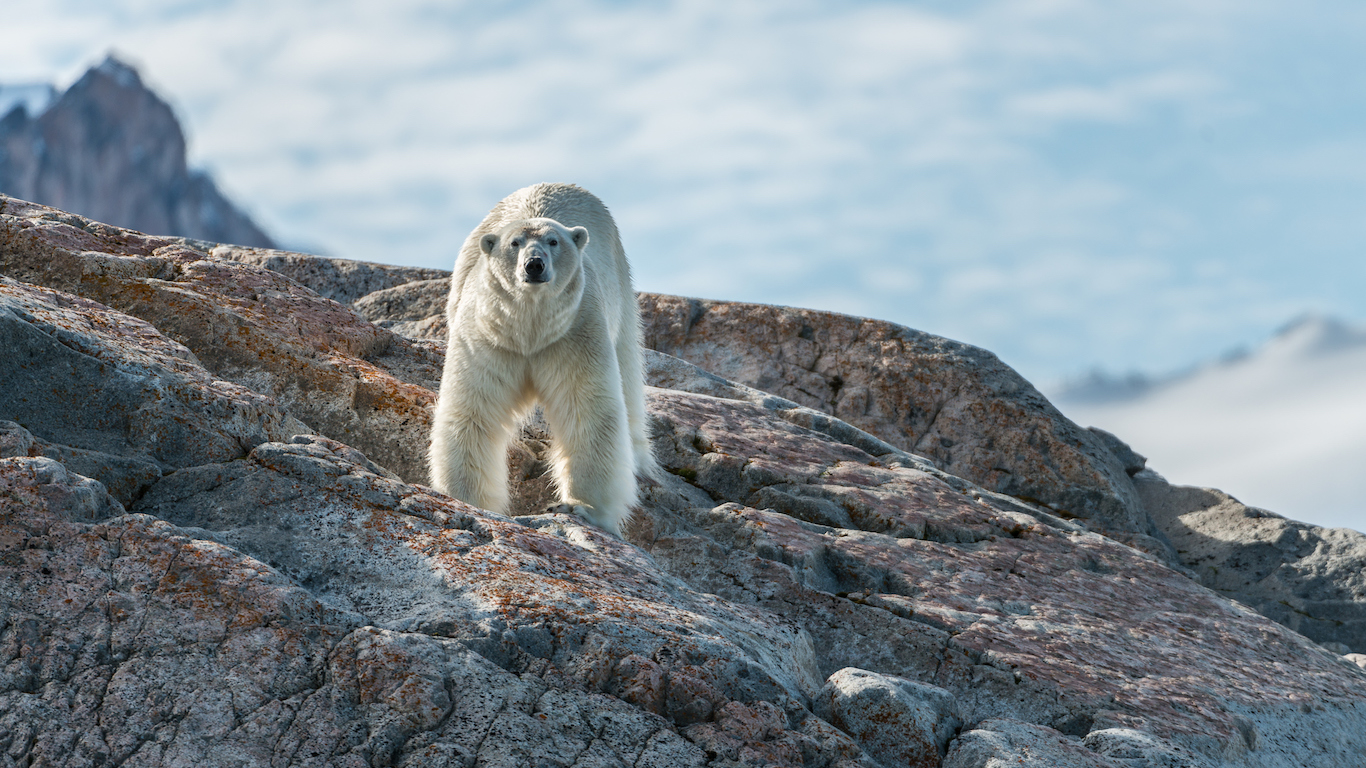
22. In May 2008 the Interior Department designated polar bears as a threatened species in the United States under the Endangered Species Act.
The biggest threat to polar bears is climate change. The rise in global temperatures means that each year the sea ice melts earlier and forms later, shrinking the bears’ habitat and time for hunting.
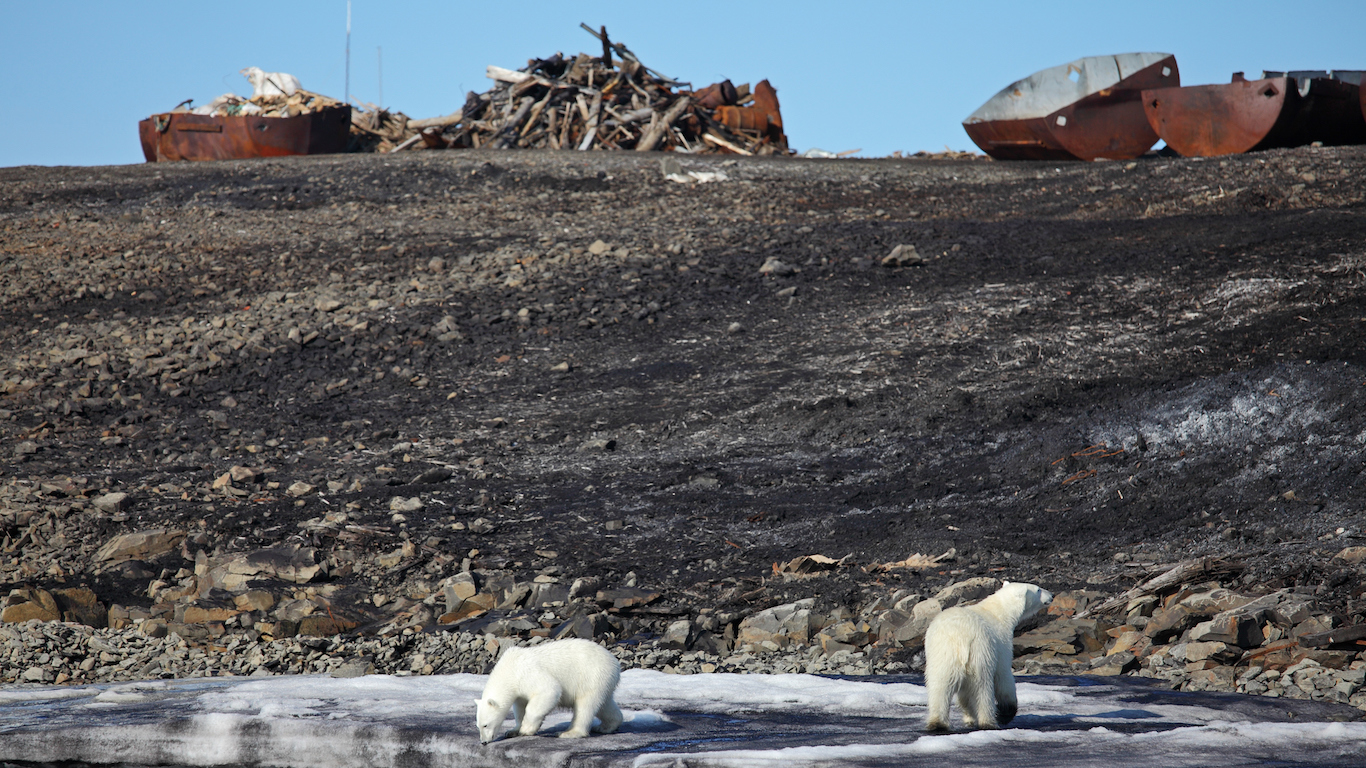
23. As their hunting grounds shrink, polar bears might be becoming less picky about their diet.
They have recently been spotted eating dolphins, whale carcasses, and even the eggs of snow geese. But it would take 88 of these eggs to provide the same energy as one seal.

24. Polar bears lose about two pounds of body mass each day they are on land.
This highlights the importance of preserving their sea ice habitats. Should global warming intensify this would mean more starving bears.
[in-text-ad-2]

25. Polar bears do not hibernate.
While scientists have long thought that polar bears hibernate during the summer, when their food supply is scarce, recent studies have found no evidence of this. Female bears, however, do den with their cubs for several months a year.
Travel Cards Are Getting Too Good To Ignore (sponsored)
Credit card companies are pulling out all the stops, with the issuers are offering insane travel rewards and perks.
We’re talking huge sign-up bonuses, points on every purchase, and benefits like lounge access, travel credits, and free hotel nights. For travelers, these rewards can add up to thousands of dollars in flights, upgrades, and luxury experiences every year.
It’s like getting paid to travel — and it’s available to qualified borrowers who know where to look.
We’ve rounded up some of the best travel credit cards on the market. Click here to see the list. Don’t miss these offers — they won’t be this good forever.
Thank you for reading! Have some feedback for us?
Contact the 24/7 Wall St. editorial team.
 24/7 Wall St.
24/7 Wall St. 24/7 Wall St.
24/7 Wall St. 24/7 Wall St.
24/7 Wall St. 24/7 Wall St.
24/7 Wall St. 24/7 Wall St.
24/7 Wall St.


